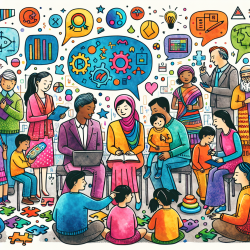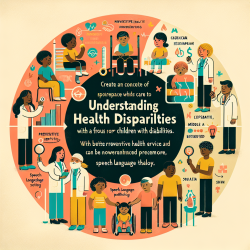Introduction
In the realm of youth mental health, the need for effective interventions is paramount. The recent study titled "Long-term Results from the Empowering a Multimodal Pathway Toward Healthy Youth Program" provides compelling evidence on the efficacy of a school-based multimodal approach in reducing suicidality, depression, and anxiety among students aged 11-18. This blog explores how practitioners can leverage these findings to enhance their practice and improve outcomes for children.
The EMPATHY Program: A Data-Driven Success
The EMPATHY program, implemented in Red Deer, Alberta, involved 6,227 students and utilized a combination of interventions, including supervised online cognitive behavioral therapy (CBT), universal CBT interventions, interactions with Resiliency Coaches, and referrals to external services. Over 15 months, the program demonstrated statistically significant reductions in suicidality, depression, and anxiety scores among participants.
Key Findings and Implications
- Reduction in Suicidality: The percentage of students considered actively suicidal decreased from 4.4% at baseline to 2.8% after 15 months, indicating the program's effectiveness in addressing severe mental health risks.
- Decrease in Depression and Anxiety: Mean depression scores dropped from 3.73 at baseline to 3.22, while anxiety scores also showed significant improvement. These changes suggest that the program's interventions had a positive impact on the overall mental health of the student population.
- Longitudinal Benefits: Among the 1,884 students who completed all assessments, depression scores decreased from 3.43 to 2.95, and suicidality rates halved, underscoring the program's sustained benefits.
Implementing Multimodal Approaches in Practice
Practitioners can draw several lessons from the EMPATHY program to enhance their practice:
- Adopt a Multimodal Strategy: Combining universal and targeted interventions can maximize the impact on student mental health, addressing both widespread issues and high-risk individuals.
- Utilize Data-Driven Interventions: Regular assessments and data collection are crucial for identifying at-risk students and tailoring interventions to meet their specific needs.
- Engage with Families and Communities: Involving parents and community resources can enhance the support network for students, fostering a holistic approach to mental health care.
Encouraging Further Research
While the EMPATHY program's results are promising, further research is needed to explore the scalability and adaptability of such interventions across different settings. Practitioners are encouraged to engage in research efforts to refine and validate multimodal approaches, contributing to a broader understanding of effective strategies in youth mental health.
To read the original research paper, please follow this link: Long-term Results from the Empowering a Multimodal Pathway Toward Healthy Youth Program, a Multimodal School-Based Approach, Show Marked Reductions in Suicidality, Depression, and Anxiety in 6,227 Students in Grades 6–12 (Aged 11–18).










